| Published in Attractions / Places of Interest |
Basilica of Sant'Ambrogio, Milan, Italy
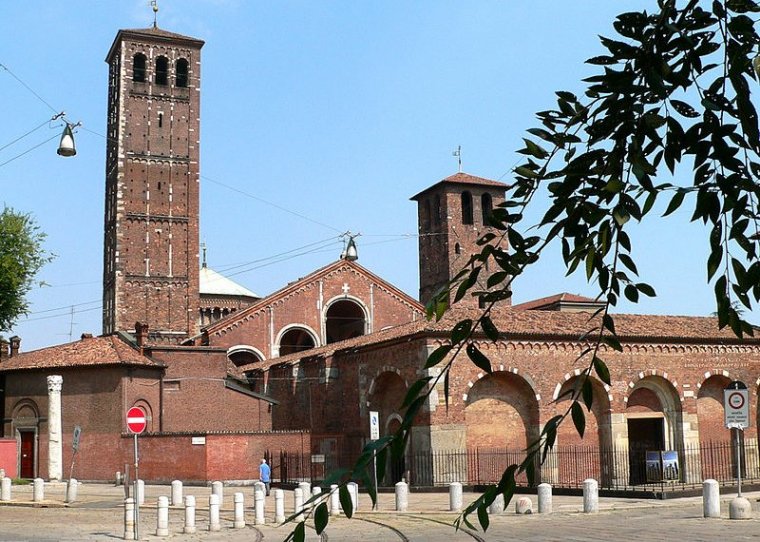
Basilica of Sant'Ambrogio, Milan, Italy. ![]()
The Basilica of Sant'Ambrogio (official name: Basilica romana minore collegiata abbaziale prepositurale di Sant'Ambrogio) is a church in Milan, northern Italy.
One of the most ancient churches in Milan, it was built by St. Ambrose in 379–386, in an area where numerous martyrs of the Roman persecutions had been buried. The first name of the church was in fact Basilica Martyrum.
The church is mostly built in brickwork of different origins and colors, with parts of stone and white plastering. The current Romanesque church was begun around 1080. The nave dates to about 1128 and the rib vaults of the nave are from about 1140.
The original edifice, like the great churches of Rome of the same epoch, belonged to the basilica type; it consisted of a central nave lighted from the clerestory, two side aisles, an apse, and an atrium.
Investigations made in 1864 have established the fact that the nave and the aisles of the existing basilica correspond with those of the primitive church; the atrium, however, which dates from the 9th century, and two smaller apses, flanking a new central apse of greater depth than the original, were erected. The altar occupies about the same place as in the time of St. Ambrose, and the columns of the ciborium over the altar appear never to have been disturbed; they still rest on the original pavement.
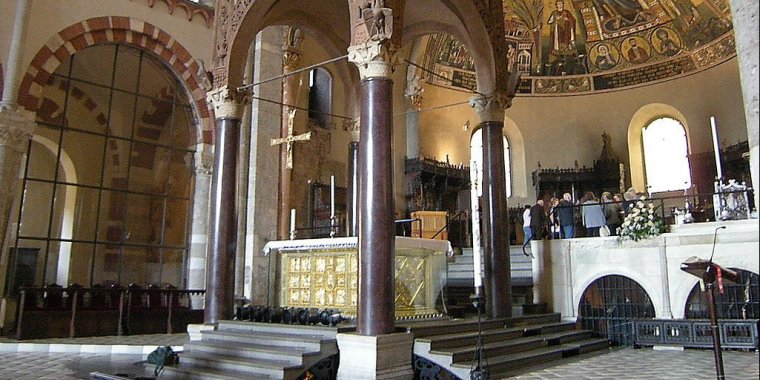
Basilica of Sant'Ambrogio - interior. ![]()
In the following centuries the edifice underwent several restorations and partial reconstructions, assuming the current appearance in the 12th century. The basilica plan of the original edifice was maintained, with an apse and two aisles, all with apses, and a portico with arches supported by semicolumns and pilasters preceding the entrance.
The latter was used to house the catechumens who attended part of the Mass prior to receiving baptism (this custom disappeared in the early 11th century); the portico, whose entrance has four blind arcades with an open one in the centre, was later used for civil and religious meetings.
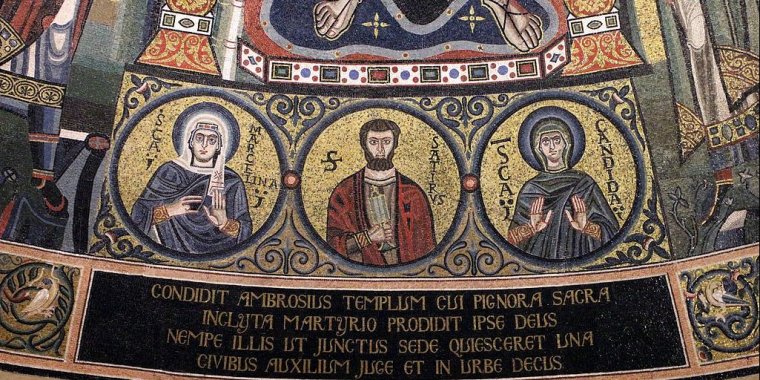
Basilica of Sant'Ambrogio - Apse mosaic. ![]()
The hut-shaped façade has two orders of loggias: the lower one has three arcades of same span, which join the portico ones, which are slightly higher.
The portico's arcade are supported by pillars, flanked by semi-columns. They have double archivolts, while the portico's upper frame is decorated with Lombard bands, which are repeated also on the façade. Thin lesenes start from the pillars' centres, reaching the upper frame. The capitals are decorated by animal (lions, wild boars), and human figures (mostly heads, but also angels and others), as well as by vegetable or fantastic motifs of pre-Romanesque origin.
Under the narthex, between the central portal and the left aisle's portal, is the sarcophagus of Pietro Candido Decembrio, from the 15th century. The central portal is flanked by two multi-column pillars, and has an archivolt with decorative of elements of Sassanid origin.
The basilica has two bell towers. The right one, called dei Monaci ("of the Monks"), is from the 9th century and has a severe appearance typical of defensive structures. The left and higher one dates from 1144, the last two floors having been added in 1889.

Basilica of Sant'Ambrogio - interior. ![]()
The basilica has a semi-circular apse, and smaller, semi-circular chapels at the end of the aisles; there is no transept. The interior has the same size as the external portico.
The ceiling features groin vaults with ogives, each supported by its own semi-pillar or semi-column, which, in the lower section, become a single pillar. The aisles' spans measure exactly half of those in the nave, and are supported by lesser pillars. The matronei (galleries) over the aisles support the vaults but preclude clerestory windows.
The third central span, on the left, houses the 12th century Romanesque ambon or pulpit, built on a pre-existing 9th century one; which utilizes as a base a 4th-century Roman sarcophagus, traditionally known as the Sarcophagus of Stilicho. It has nine small columns with decorated capitals and friezes, featuring animal and human figures, as well as vegetable and fantastic motifs.
The front of the ambon is decorated by two gilt copper reliefs, depicting the symbols of two evangelists, Saints Matthew (praying man) and John (eagle).
Under the dome cladding, in the last span of the nave, is the presbytery with, in its centre, the high altar. This was realized in 824–859 by Volvinius. It features a golden antependium with precious stones on both sides.
The altar is surmounted by a contemporary ciborium, commissioned by archbishop of Milan Angilbert II, whence its common name. It has four columns in red porphyry and has, on each side, bar-reliefs depicting Christ with Sts Peter and Paulus (front side), St. Ambrose Receives the Homage from Two Monks, at the Presence of Sts Gervasius and Protasus" (rear side), St Benedict Receives the Homage from Two monks (left side), and St. Scholastica Receives the Homage from Two Nuns (right side).
The apse displays an early 13th-century mosaic, depicting Christ Pantokrator with Sts Gervasus and Protasus, and at the sides, Scenes from the Life of St. Ambrose. The apse mosaic was heavily restored after damage during the Second World War II. The oratory of San Vittore in Ciel d'Oro, built in the 4th by bishop Maternus, houses mosaics on the walls and in the ceiling (5th century). These include one of the earliest portrait of St Ambrose.
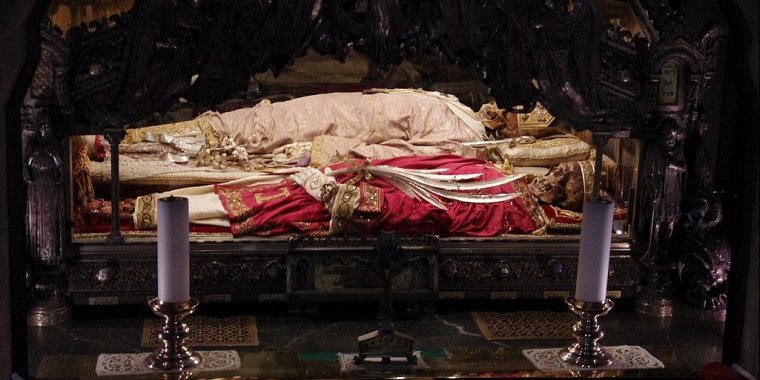
The crypt in Sant'Ambrogio basilica in Milan, with skeletons of Saint Ambrose, Saint Gervasius and Saint Protasius. ![]()
The church also houses the tomb of Emperor Louis II, who died in Lombardy in 875. The crypt, located under the high altar, was built in the 9th century to house the remains of three saints venerated here: Ambrose, Gervasus and Protasus. The remains of the saints were already in a crypt in the area, although their position went lost with the centuries. In the 9th century bishop Angilbert found them and had them put in a single porphyry sarcophagus.
The current appearance of the crypt dates from the 18th century restoration commissioned by cardinal Benedetto Erba Odescalchi and to others from the following century, in which the bodies of the three saints were moved to a silver urn in a space under the ciborium.
Source
• www.wikipedia.org
YOU MAY ALSO LIKE
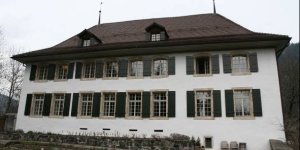

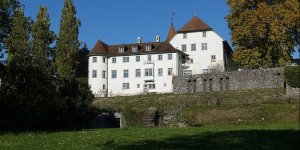


 If you own or manage a travel-related business such as a hotel, a bed-and-breakfast, a restaurant, a pub or a cafeteria, you can create a web page for your business for free on Titi Tudorancea Travel Info. » |
